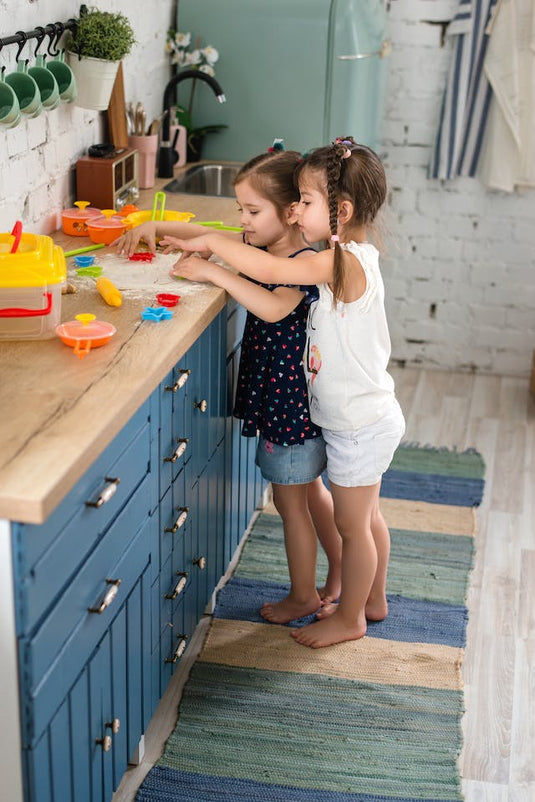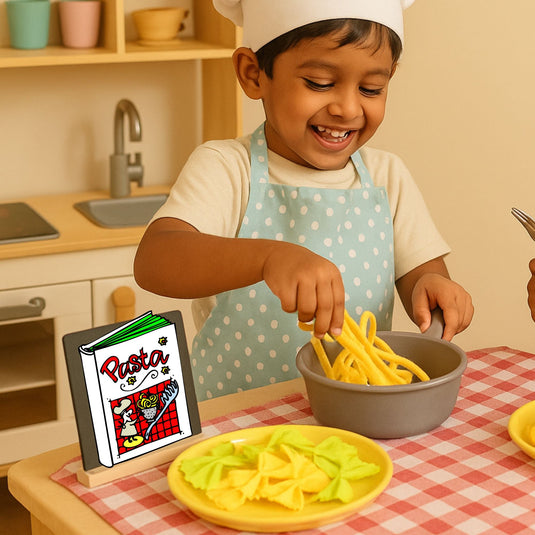Teaching nutrition through play kitchen food can be a fun and engaging way to instill healthy eating habits in children. Here are some creative ideas to make the learning process enjoyable:
-
Sorting and Categorizing:
- Provide a variety of play food items, and ask children to sort them into different categories based on food groups (fruits, vegetables, grains, proteins).
- Use color-coded baskets or plates to make the sorting process visually appealing.
-
Build a Balanced Plate:
- Have a "build your plate" activity where children create a balanced meal using play food items. Encourage them to include items from each food group.
- Discuss the importance of having a variety of colors on their plate for different nutrients.
-
Nutrient Matching Game:
- Label play food items with nutrient cards (e.g., calcium for milk, vitamin C for oranges). Kids can match the food to the corresponding nutrient, learning about the health benefits of each.
-
Create a Rainbow Salad:
- Assign different colors to various nutrients (e.g., red for vitamin C, green for fiber). Challenge kids to create a rainbow salad by selecting play food items representing each color/nutrient.
-
Storytelling with Food:
- Use play food items to create a story. For example, a broccoli superhero fighting off the candy villain. This helps children associate positive traits with nutritious foods.
-
Cooking and Counting:
- Incorporate math skills by assigning values to play food items (e.g., 2 for a carrot, 5 for an apple). Kids can "cook" a meal and practice addition to determine the total nutritional value.
-
Labeling Exercise:
- Create mini labels for each play food item with nutritional information. Kids can match the food to its label and discuss the importance of nutrients like vitamins, minerals, and calories.
-
Farm-to-Table Lesson:
- Introduce the concept of where food comes from by incorporating play food items representing farm produce. Discuss the journey from the farm to the table and the nutritional benefits of fresh, whole foods.
-
Taste Testing:
- Arrange a pretend taste-testing session where children can explore different play food items. Encourage discussions on flavors, textures, and the nutritional benefits of diverse foods.
-
Grocery Shopping Adventure:
- Set up a play grocery store and provide children with a shopping list that includes various food groups. This activity promotes awareness of healthy food choices while honing numeracy and literacy skills.
Remember to keep the activities age-appropriate and allow for creativity and exploration. Engaging all the senses and incorporating play into nutritional education can make the learning experience more enjoyable and impactful.




